Teaching mindfulness to children and adolescents can have profound and lasting effects on their overall well-being, cognitive abilities, emotional regulation, and social interactions. By equipping young minds with the tools to navigate their inner and outer worlds with awareness and compassion, we lay the foundation for a more balanced and resilient future generation.
In this discussion, we will explore the significance of teaching mindfulness at an early age and the potential benefits it brings. We will delve into the ways in which mindfulness practices can positively impact children’s development, enhance their psychological and emotional growth, and empower them to face life’s challenges with resilience and equanimity.
Moreover, we will examine how mindfulness education in schools and homes can help foster a culture of empathy, compassion, and understanding, leading to healthier relationships and a more harmonious society.
As we embark on this journey to understand the importance of teaching mindfulness to children and adolescents, it becomes evident that investing in their mental well-being from an early stage not only shapes their individual lives but also has far-reaching implications for the collective well-being of our communities and the world at large.
By nurturing the seeds of mindfulness in young minds, we have the opportunity to cultivate a generation that is better equipped to navigate the complexities of life, foster their own happiness, and contribute positively to the world they inhabit.
Table of contents
Creating a Mindful Environment for Kids

By creating a peaceful and harmonious space at home or in the classroom, we can empower kids to navigate their emotions, foster concentration, and develop a sense of inner calm. In this blog, we will explore practical tips for establishing a mindful environment, incorporating soothing elements, and minimizing distractions to promote mindfulness practice.
Embrace Soft Lighting:
Soft, gentle lighting can have a profound impact on the atmosphere of a space. Harsh fluorescent lights can be overstimulating, while warm, dim lighting promotes relaxation and tranquility. Consider using lamps with soft, warm-colored bulbs or installing a dimmer switch to control the intensity of the light. Encourage natural light during the day by opening curtains or blinds, connecting children with the outside world.
Harness the Power of Nature:
Nature has a soothing effect on our minds and bodies. Incorporate elements of nature into the environment by adding plants, flowers, or nature-inspired artwork. Create a small indoor garden or a designated area for children to observe and care for plants. This connection with nature fosters a sense of calmness and encourages mindfulness.
Integrate Soothing Sounds:
Music has the power to influence our moods and create a tranquil ambiance. Choose soft, instrumental music or nature sounds to play in the background during mindfulness activities or quiet moments. Instrumental pieces with gentle melodies and rhythms can help children relax and focus their attention. Experiment with different genres to find what resonates best with the children in your care. learn about budgeting for kids.
Declutter and Organize:
A clutter-free environment can significantly reduce distractions and create a sense of order and calm. Encourage regular decluttering sessions, involving children in the process. Teach them the importance of letting go of unnecessary items and creating space for clarity and focus. Organize materials and supplies in an easily accessible manner to avoid unnecessary disruptions during mindfulness practices.
Establish a Quiet Corner or Meditation Space:
Designate a specific area as a quiet corner or meditation space where children can retreat to find solace and recharge. Arrange comfortable pillows, cushions, or bean bags in this area to create a cozy and inviting atmosphere. Add elements such as calming artwork, inspirational quotes, or a small tabletop fountain to enhance the peaceful vibe.
Minimize Digital Distractions:
Technology can often be a source of distraction, hindering mindfulness and concentration. Set boundaries on screen time and designate specific times when devices are not allowed. Create device-free zones or periods to encourage present-moment awareness and engagement with the environment. Model this behavior by being mindful of your own technology use.
Cultivate Mindfulness Rituals:
Incorporate mindfulness rituals into daily routines to promote a sense of calm and presence. Begin and end each day with a few moments of quiet reflection, deep breathing, or a short guided meditation. Encourage children to express gratitude by keeping gratitude journals or sharing appreciation during family or classroom discussions.
Mindfulness Worksheets for Emotional Awareness
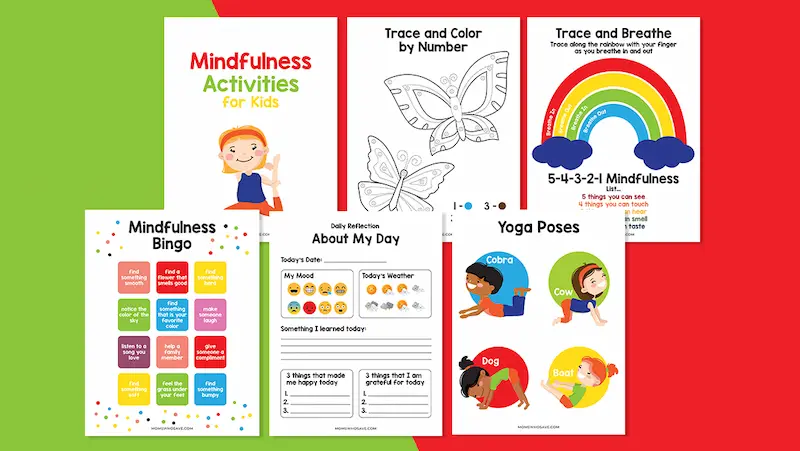
Mindfulness worksheets for kids designed specifically for emotional awareness can play a significant role in helping children recognize and manage their feelings. These worksheets offer engaging exercises that promote self-awareness and emotional regulation. By incorporating these activities into their daily routines, children can develop a healthier relationship with their emotions and enhance their overall well-being.
Emotion Identification:
One of the fundamental aspects of emotional awareness is recognizing different emotions. Mindfulness Worksheets for kids designed to facilitate emotion identification can be a valuable tool in this process. These exercises often include visual representations of facial expressions or scenarios that depict various emotional states. By engaging with these worksheets, children can learn to identify and label emotions such as happiness, sadness, anger, fear, and surprise. This simple yet powerful activity helps children become more familiar with their own emotional experiences and those of others, promoting empathy and understanding.
Emotion Tracking:
Emotion-tracking worksheets provide children with an opportunity to monitor their emotions throughout the day. These exercises typically involve creating a visual representation of their emotional state at different times or situations. By reflecting on their feelings and the factors that influence them, children develop a deeper understanding of their emotional patterns and triggers. This practice empowers them to recognize when they are experiencing intense emotions and encourages them to implement appropriate coping strategies. Emotion tracking worksheets also allow children to communicate their emotions effectively with caregivers, fostering open and constructive dialogue.
Creating an Emotion Journal:
An emotion journal is an effective tool for children to explore their emotions in a structured manner. This activity involves writing or drawing about their emotional experiences, including the events or situations that triggered specific feelings. The journal can be personalized based on the child’s preferences, allowing them to express themselves freely. By regularly engaging with their emotion journal, children can identify recurring emotions and gain insights into their emotional well-being over time. This process promotes self-reflection and introspection, enabling children to develop emotional resilience and adaptive coping mechanisms.
Practicing Mindful Breathing:
Mindful breathing exercises are often incorporated into mindfulness worksheets for emotional awareness. These activities guide children to focus on their breath, bringing attention to the present moment and fostering a sense of calm. By practicing mindful breathing regularly, children learn to regulate their emotions and manage stress effectively. Worksheets can provide visual cues or step-by-step instructions to support children in developing this mindful breathing practice. By incorporating these exercises into their daily routine, children can enhance their emotional well-being and cultivate a greater sense of inner peace.
Mindfulness Games and Activities for Kids
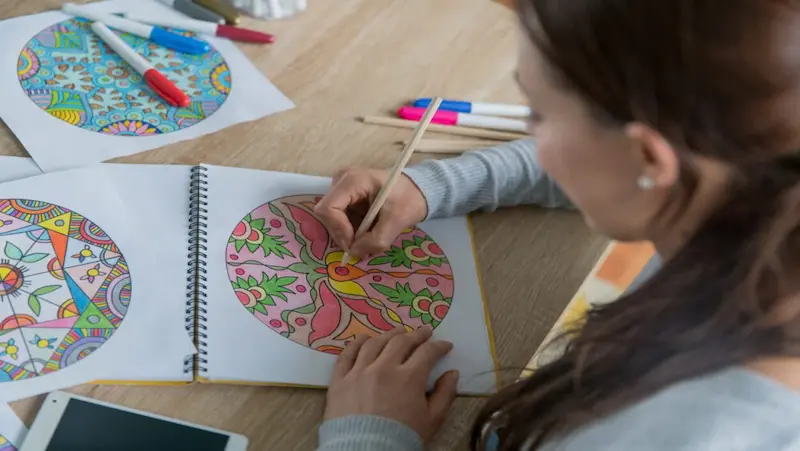
Mindfulness is the practice of bringing one’s attention to the present moment, cultivating awareness and non-judgmental acceptance of thoughts and feelings. While mindfulness is beneficial for people of all ages, introducing mindfulness to children can set the foundation for a lifetime of well-being and emotional resilience.
One effective way to engage children in mindfulness is through interactive and enjoyable games and activities. In this blog, we will explore various mindfulness games and activities designed specifically for kids, along with printable worksheets, to help them develop mindfulness skills in a playful and engaging manner.
Mindful Scavenger Hunt:
The Mindful Scavenger Hunt is a delightful game that encourages children to engage their senses and be fully present in the environment. Create a list of sensory experiences or specific items found in nature, such as the sound of birds chirping, the feel of grass beneath their feet, or the sight of a colorful flower. Provide children with a checklist and ask them to explore their surroundings mindfully, checking off each item as they encounter it. This activity promotes sensory awareness and encourages children to connect with the world around them.
Sensory Exploration:
Sensory exploration activities help children cultivate mindfulness by focusing on their senses. Set up stations with different sensory experiences, such as a bin of sand or rice for tactile exploration, scented objects for olfactory awareness, and calming music for auditory mindfulness. Allow children to spend time at each station, encouraging them to describe what they see, feel, smell, or hear. This activity helps children tune into their senses, promoting present-moment awareness and deepening their sensory experiences.
Breathing Buddies:
Breathing Buddies is a simple yet powerful activity that teaches children the importance of mindful breathing. Give each child a small stuffed animal or toy and ask them to lie down comfortably on their backs. Instruct them to place the toy on their bellies and guide them to observe how it rises and falls with each breath. Encourage slow, deep breaths, and have them focus their attention on the gentle rhythm of their breathing. This activity helps children learn to regulate their breath, promoting relaxation and a sense of calm.
Mindful Coloring:
Coloring is a popular activity among children, and it can be transformed into a mindful practice. Provide children with coloring sheets featuring intricate designs or patterns and a variety of colored pencils or markers. Instruct them to color mindfully, paying attention to each stroke, the colors are chosen, and the sensations felt while coloring. Encourage them to observe any thoughts or emotions that arise without judgment. Mindful coloring helps children develop focus, concentration, and a deeper connection with their creative expression.
Free coloring sheets for kids offer a creative outlet that sparks imagination and artistic expression. Children can use them to experiment with colors, enhance fine motor skills, and engage in calming activities that promote focus and mindfulness
Printable Worksheets:
To make these mindfulness activities more accessible, we have prepared printable mindfulness worksheets for kids that can be downloaded and used for each game. These worksheets provide guidance and structure for the activities, making them easier to implement.
Mindfulness for Better Focus and Academic Success
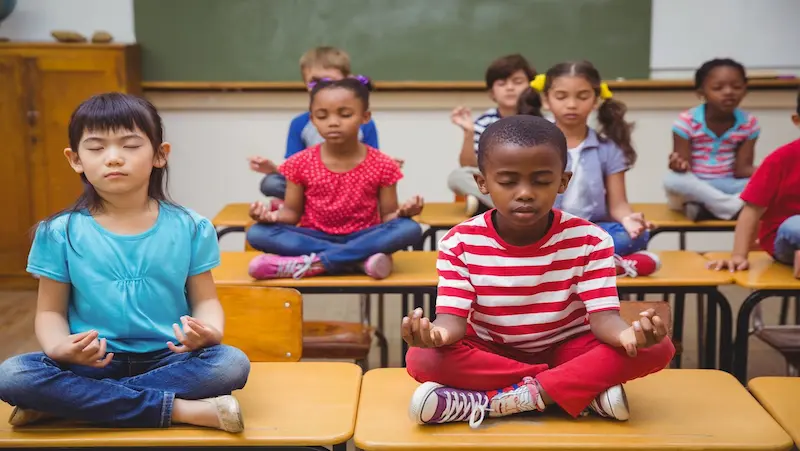
The Connection Between Mindfulness and Improved Focus:
Mindfulness is the practice of being fully present and engaged in the current moment without judgment. Numerous studies have shown that regular mindfulness practice positively impacts cognitive processes such as attention, focus, and working memory. By training our minds to focus on the present moment and redirecting our attention when it wanders, we can improve our ability to concentrate on academic tasks, absorb information more effectively, and retain it for longer periods.
Worksheets and Techniques for Enhancing Focus and Attention:
Breathing Exercises: Deep breathing exercises help calm the mind, increase oxygen flow, and improve focus. Encourage students to take a few moments before studying to engage in deep belly breathing. A simple technique is to inhale deeply through the nose for a count of four, hold the breath for a count of four, and exhale slowly through the mouth for a count of six.
Elevate Focus and Calmness with Mindfulness Breathing for Kids Check This Out to Empower Your Children
Mindful Listening: Listening mindfully helps students sharpen their attention skills. Provide students with an audio recording or play soft instrumental music and ask them to focus on the subtle sounds within the environment. Afterward, discuss their observations and how it affected their ability to concentrate.
Five Senses Exercise: Engage students in a mindfulness activity that involves focusing on each of their five senses. Have them identify five things they can see, four things they can touch, three things they can hear, two things they can smell, and one thing they can taste. This exercise helps bring awareness to the present moment and enhances sensory perception.
Incorporating Mindfulness into Study Routines and Classroom Settings:
Mindful Study Breaks: Encourage students to take short mindful breaks during study sessions. They can practice deep breathing, stretch their bodies, or engage in a quick mindful walk. These breaks allow the mind to recharge and improve overall focus and concentration.
Mindful Eating: Encourage students to practice mindfulness while eating. Encourage them to pay attention to the colors, smells, tastes, and textures of their food. By eating mindfully, students can improve their ability to focus on the task at hand.
Mindful Transitions: Teach students the importance of transitioning mindfully between different activities. Before starting a new task or moving to another subject, encourage them to take a moment to pause, breathe, and set an intention for the upcoming activity. This practice helps cultivate focus and reduces distractions.
Mindfulness in Everyday Life for Kids
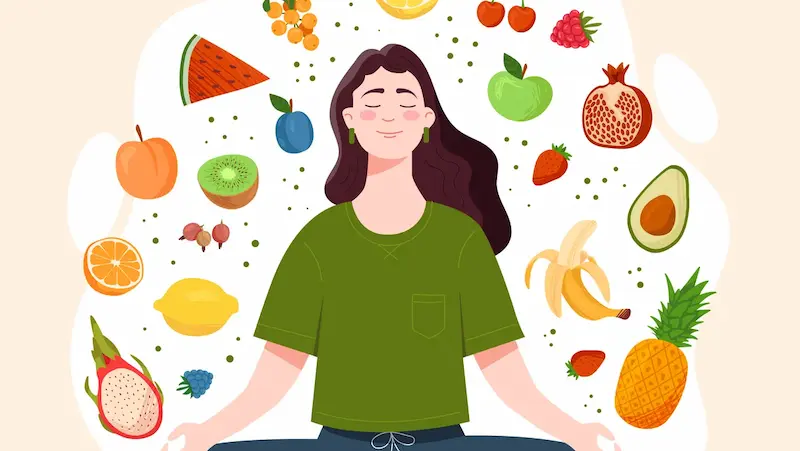
Mindfulness worksheets for kids, simply put, are the practice of paying attention to the present moment without judgment. It allows children to develop self-awareness, emotional resilience, and a deeper connection with themselves and the world around them.
By incorporating mindfulness worksheets for kids into their everyday routines, kids can experience a greater sense of calm, focus, and well-being. In this blog, we will explore how mindfulness can be applied to various daily activities, provide practical exercises and worksheets, and emphasize the importance of adults as mindful role models.
Mindful Eating:
Eating is an activity that can be transformed into a mindful experience. Encourage children to slow down and savor each bite, paying attention to the flavors, textures, and smells of their food. Mindful eating helps foster gratitude for nourishment and encourages healthy eating habits. To promote mindful eating, try the “raisin exercise” where children explore a raisin with their senses before slowly eating it.
Mindful Walking:
Walking is an excellent opportunity for children to connect with nature and their bodies. Encourage them to notice the sensations in their feet as they touch the ground, the movement of their limbs, and the sounds and sights around them. Encourage them to walk slowly and mindfully, feeling each step and appreciating the present moment. A “nature walk” can also be a great way for children to engage their senses and observe the beauty of their surroundings.
Mindful Play:
Playtime offers a perfect platform for children to explore mindfulness. Encourage them to fully engage in their chosen activities, whether it’s building with blocks, playing with dolls, or drawing. Encourage them to focus on the present moment, observe their thoughts and emotions, and fully immerse themselves in the joy of play. Incorporating simple breathing exercises during playtime can also help children calm their minds and enhance their ability to stay present. Learn about financial education for kids also.
Practical Exercises and Worksheets:
Provide children with practical exercises and worksheets that guide them through mindfulness worksheets for kids. These resources can include guided meditation recordings, coloring sheets featuring mandalas or nature scenes, gratitude journals, and emotion exploration worksheets. Make these resources easily accessible and encourage children to use them during quiet moments to reflect, relax, and develop their mindfulness skills.
Role Modeling Mindfulness:
Parents and educators play a vital role in cultivating mindfulness in children. Children learn by observing and imitating the behavior of the adults around them. Therefore, it is essential for parents and educators to be mindful role models. Practice mindfulness worksheets for kids in your own daily life and share your experiences with children. Engage in mindful activities together, such as meditating, taking mindful walks, or having mindful conversations. When children see adults valuing mindfulness, they are more likely to embrace and integrate it into their lives.
Conclusion
In conclusion, “mindfulness worksheets for Kids” is a valuable resource that aims to promote mindfulness among children in a fun and interactive way. Throughout this journey, we have explored the significance of mindfulness in a child’s development and the benefits it offers for their overall well-being.
In a world filled with distractions and fast-paced living, nurturing mindfulness in children is paramount. It equips them with the tools to navigate the complexities of life, develop resilience, and cultivate healthy relationships with themselves and others. “mindfulness worksheets for Kids” presents a practical and accessible approach to introducing mindfulness to young learners, setting them on a path of self-discovery and personal growth.
In conclusion, this resource acts as a guide, offering children an opportunity to explore the practice of mindfulness in a way that is engaging, enjoyable, and age-appropriate. By incorporating these worksheets into their daily routines, children can develop valuable life skills that will contribute to their well-being and success in all aspects of life.
Also, BrightChamps provides a comprehensive platform for learning about money for kids, offering interactive and engaging resources that teach financial literacy, budgeting, saving, and other essential money management skills.
Frequently Asked Questions
A1. Some screen-free mindfulness games indoors include “I Spy,” puzzle-solving, and breathing exercises.
A2. Encourage screen-free fun and mindfulness activities by setting a positive example, providing a variety of engaging options, and creating a designated screen-free time.
Boost Focus and Calm: Engage with Mindfulness Exercises for kids that Enhance Concentration and Inner Balance
A3. Outdoor games like nature scavenger hunts, mindful walking, and yoga in the park promote mindfulness without screens.
A4. Screen-free fun and mindfulness games benefit kids by improving focus, reducing stress, fostering creativity, and enhancing overall well-being.
A5. Simple mindfulness activities for car rides or travel include listening to calming music, playing the “5 Senses” game, and practicing deep breathing.
A6. Incorporate mindfulness games into your child’s daily routine by scheduling dedicated mindfulness breaks, creating a calm environment, and participating together.
A7. Yes, mindfulness games such as guided meditation, gratitude circles, and storytelling can be enjoyed as a family.
A8. Engage children in creative and artistic screen-free activities like painting, journaling, coloring mandalas, or making crafts from natural materials to promote mindfulness.
A9. Screen-free games like memory matching, jigsaw puzzles, and concentration exercises (e.g., “Simon Says”) help improve focus and concentration in kids.
A10. Strike a balance between screen time and screen-free fun by setting limits, creating a daily schedule, encouraging outdoor activities, and promoting mindful alternatives to screen-based entertainment.

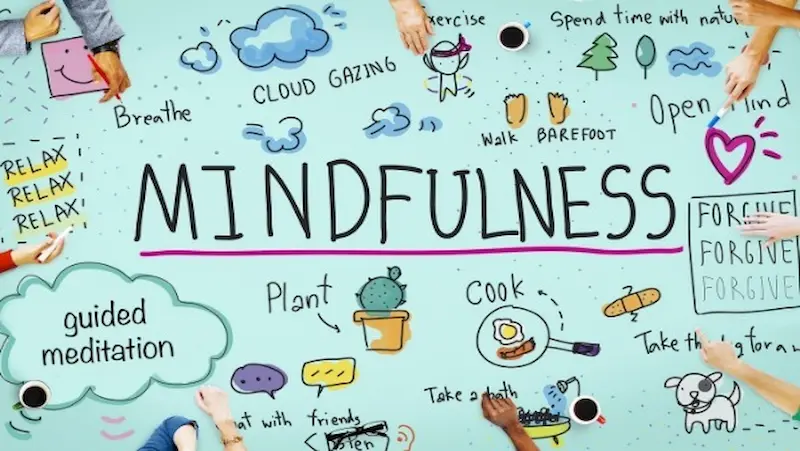
 We are an army of educators and passionate learners from BrightChamps family, committed to providing free learning resources to kids, parents & students.
We are an army of educators and passionate learners from BrightChamps family, committed to providing free learning resources to kids, parents & students.







